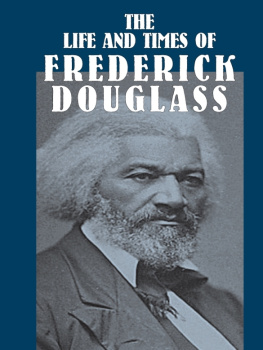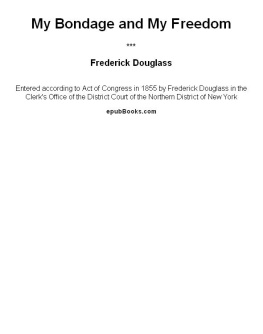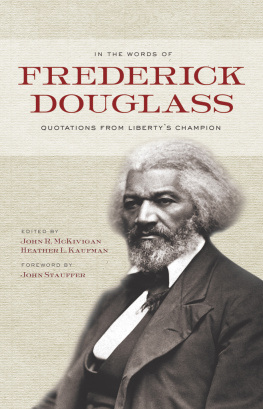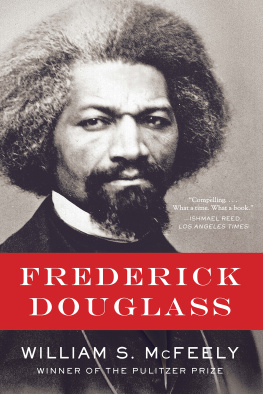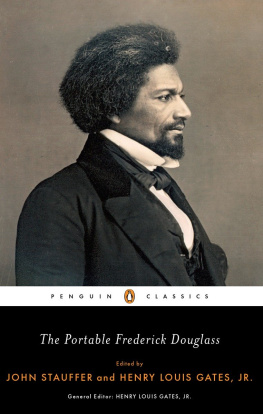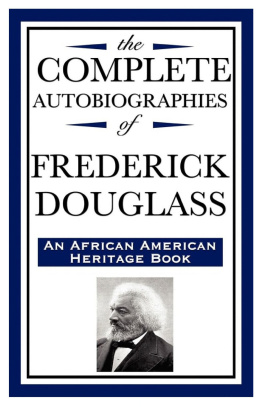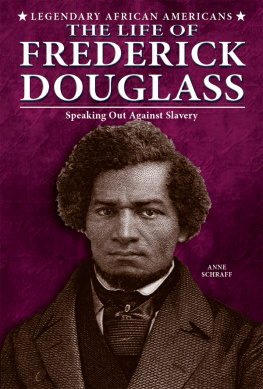
The Complete Works of
FREDERICK DOUGLASS
(1818-1895)

Contents

Delphi Classics 2019
Version 1


Browse our Main Series

Browse our Ancient Classics

Browse our Poets

Browse our Art eBooks

Browse our Classical Music series

The Complete Works of
FREDERICK DOUGLASS

By Delphi Classics, 2019
COPYRIGHT
Complete Works of Frederick Douglass

First published in the United Kingdom in 2019 by Delphi Classics.
Delphi Classics, 2019.
All rights reserved. No part of this publication may be reproduced, stored in a retrieval system, or transmitted, in any form or by any means, without the prior permission in writing of the publisher, nor be otherwise circulated in any form other than that in which it is published.
ISBN: 978 1 91348 702 7
Delphi Classics
is an imprint of
Delphi Publishing Ltd
Hastings, East Sussex
United Kingdom
Contact: sales@delphiclassics.com

www.delphiclassics.com
The Novella

View of Chesapeake Bay, Maryland Frederick Douglass was born into slavery on the Eastern Shore of Chesapeake Bay. The plantation was between Hillsboro and Cordova; his birthplace was likely his grandmothers cabin , east of Tappers Corner.

Likely site of Douglass birthplace, between Tappers Corner and the Tuckahoe

Frederick Douglass as a young man, c.1840
The Heroic Slave (1852)

A HEARTWARMING NARRATIVE OF THE ADVENTURES OF MADISON WASHINGTON, IN PURSUIT OF LIBERTY
The Heroic Slave , Douglass only piece of fiction, is loosely based on a true incident, concerning Madison Washington, an enslaved cook, who led a rebellion on a ship by 19 slaves in November 1841. They succeeded in taking control of the ship on its way to New Orleans and ordered it to be sailed to Nassau in the Bahamas. A total of 135 slaves gained freedom there, as Britain had abolished slavery in 1839. This event was the largest and most successful slave rebellion in United States history.
Although the text makes no mention of Harriet Beecher Stowe, it can be viewed as Douglass attempt to contest Uncle Toms Cabin . The description of Madison Washingtons appearance closely follows Stowes initial description of Tom. Douglass narrative rejects Stowes simple slave hero, putting in its place a well-spoken black man, who is not afraid to fight and even kill for his freedom.
Douglass was inspired to write the tale when the Rochester Ladies Anti Slavery Society requested a short story to add to their collection, Autographs for Freedom . The novella was published in 1852 by John P. Jewett and Company.

The first edition

The first editions title page

The original frontispiece
CONTENTS

How the novella opens in the first edition
PART I.

Oh! child of grief, why weepest thou?
Why droops thy sad and mournful brow?
Why is thy look so like despair ?
What deep, sad sorrow lingers there?
The State of Virginia is famous in American annals for the multitudinous array of her statesmen and heroes. She has been dignified by some the mother of statesmen. History has not been sparing in recording their names, or in blazoning their deeds. Her high position in this respect, has given her an enviable distinction among her sister States. With Virginia for his birth-place, even a man of ordinary parts, on account of the general partiality for her sons, easily rises to eminent stations. Men, not great enough to attract special attention in their native States, have, like a certain distinguished citizen in the State of New York, sighed and repined that they were not born in Virginia. Yet not all the great ones of the Old Dominion have, by the fact of their birth-place, escaped undeserved obscurity. By some strange neglect, one of the truest, manliest, and bravest of her children, one who, in after years, will, I think, command the pen of genius to set his merits forth, holds now no higher place in the records of that grand old Commonwealth than is held by a horse or an ox. Let those account for it who can, but there stands the fact, that a man who loved liberty as well as did Patrick Henry, who deserved it as much as Thomas Jefferson, and who fought for it with a valor as high, an arm as strong, and against odds as great, as he who led all the armies of the American colonies through the great war for freedom and independence, lives now only in the chattel records of his native State.
Glimpses of this great character are all that can now be presented. He is brought to view only by a few transient incidents, and these afford but partial satisfaction. Like a guiding star on a stormy night, he is seen through the parted clouds and the howling tempests; or, like the gray peak of a menacing rock on a perilous coast, he is seen by the quivering flash of angry lightning, and he again disappears covered with mystery.
Next page



